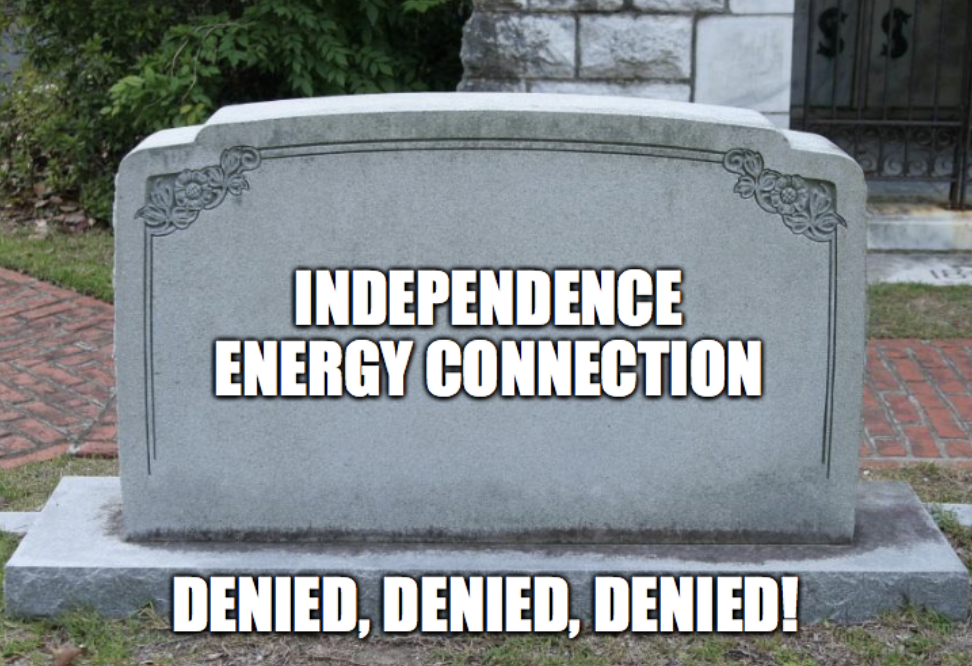Because we conclude that the Commission’s decision denying the Siting Applications and rescinding Transource’s provisional CPC was in accordance with Pennsylvania law, including Sections 1501 and 2805(a) of the Code, and Section 57.76(a) of the Regulations, and is supported by substantial, credited evidence
of record, we affirm.
However, Transource's suit in the United States District Court for the Middle District of Pennsylvania is still alive, but it is now more unlikely than ever that Transource will prevail. Transource's argument there is that PJM determines when transmission lines are needed and the state's only role is to decide where to put it. That argument has never made sense, and makes even less sense now. Here's why:
As for Transource’s arguments that PJM’s determination of need would be binding due to this matter involving issues of interstate regional transmission subject to FERC oversight,the ALJ held that the Commission was obligated to make an independent determination based on Pennsylvania law. (Id.at 82, 86, 99-102.)The ALJ further observed that while FERC has exclusive jurisdiction over the interstate transmission of electric energy and wholesale electric process, that jurisdiction was limited to matters that are not subject to state regulation. (Id.at 85 (citing Section 824(a) of the Federal Power Act, 16 U.S.C. § 824(a)).) According to the ALJ, FERC recognized this limitation by stating that there is “longstanding state authority over certain matters that are relevant to transmission planning and expansion, such as matters relevant to siting, permitting, and construction” and that the FERC was in noway invoking “an exercise of authority over those specific substantive matters traditionally reserved to the states . . . .”(Id.(quoting Transmission Planning and Cost Allocation by Transmission Owning & Operating Pub.Utils., 76 Fed. Reg. ¶¶49,842, 49,861 (Aug. 11, 2011) (FERC Order No. 1000)).) This means, according to the ALJ, that FERC Order No. 1000 was “not intended to dictate substantive outcomes” or to allow FERC to “determine what needs to be built, where it needs to be built, and who needs to build it.” (Id.at 85 n.13 (quoting S.C. Pub. Serv. Auth. v. Fed. Energy Reg. Comm’n, 762 F.3d 41, 57-58 (D.C. Cir. 2014) (internal quotation marks and citation omitted)).)
Here's something interesting from the Court's Opinion:
As for the resolution of congestion in the APSRI, it does not appear that we have ever held that congestion, which is an economic consideration, is sufficient on its own to support need or necessity under Pennsylvania law.
It was not just OCA’s witness who criticized PJM’s cost-benefit analysis, but PJM’s own Independent Market Monitor who suggested that its market efficiency process, which includes the cost-benefit analysis, be reevaluated and that the actual costs and benefits of a project should be considered and not ignored in determining whether a market efficiency project is needed.
Bravo to the PA Office of the Consumer Advocate for all its hard work to protect Pennsylvania consumers and for supplying the evidence that demonstrated how flawed PJM's market efficiency process actually was.
Many concerned citizens felt that PJM was lying about the project and its cost benefit analysis. In the end, the truth was revealed. How could anyone ever trust PJM's magic math findings that new transmission is needed ever again?

 RSS Feed
RSS Feed